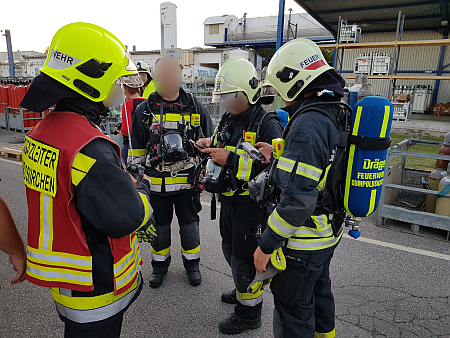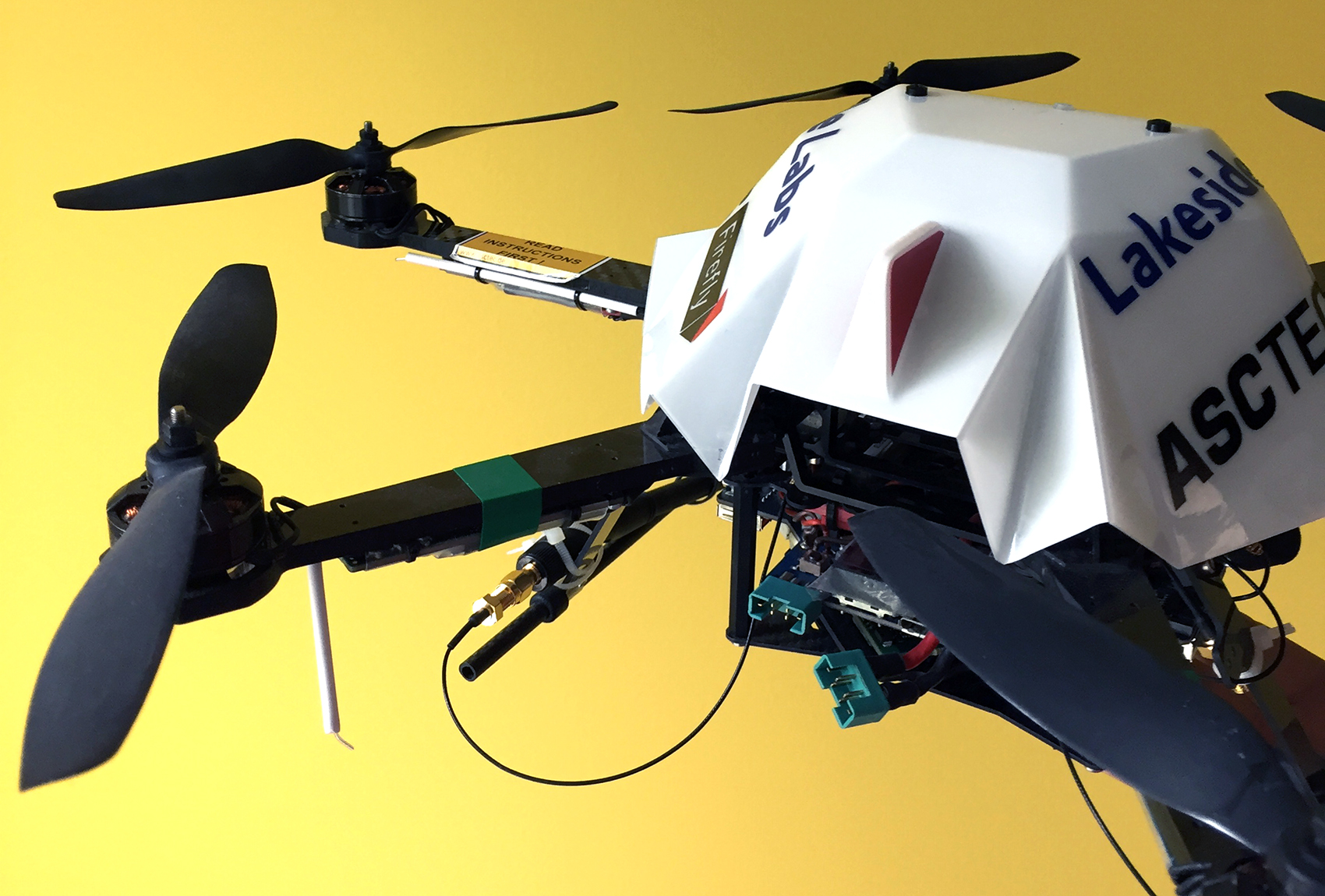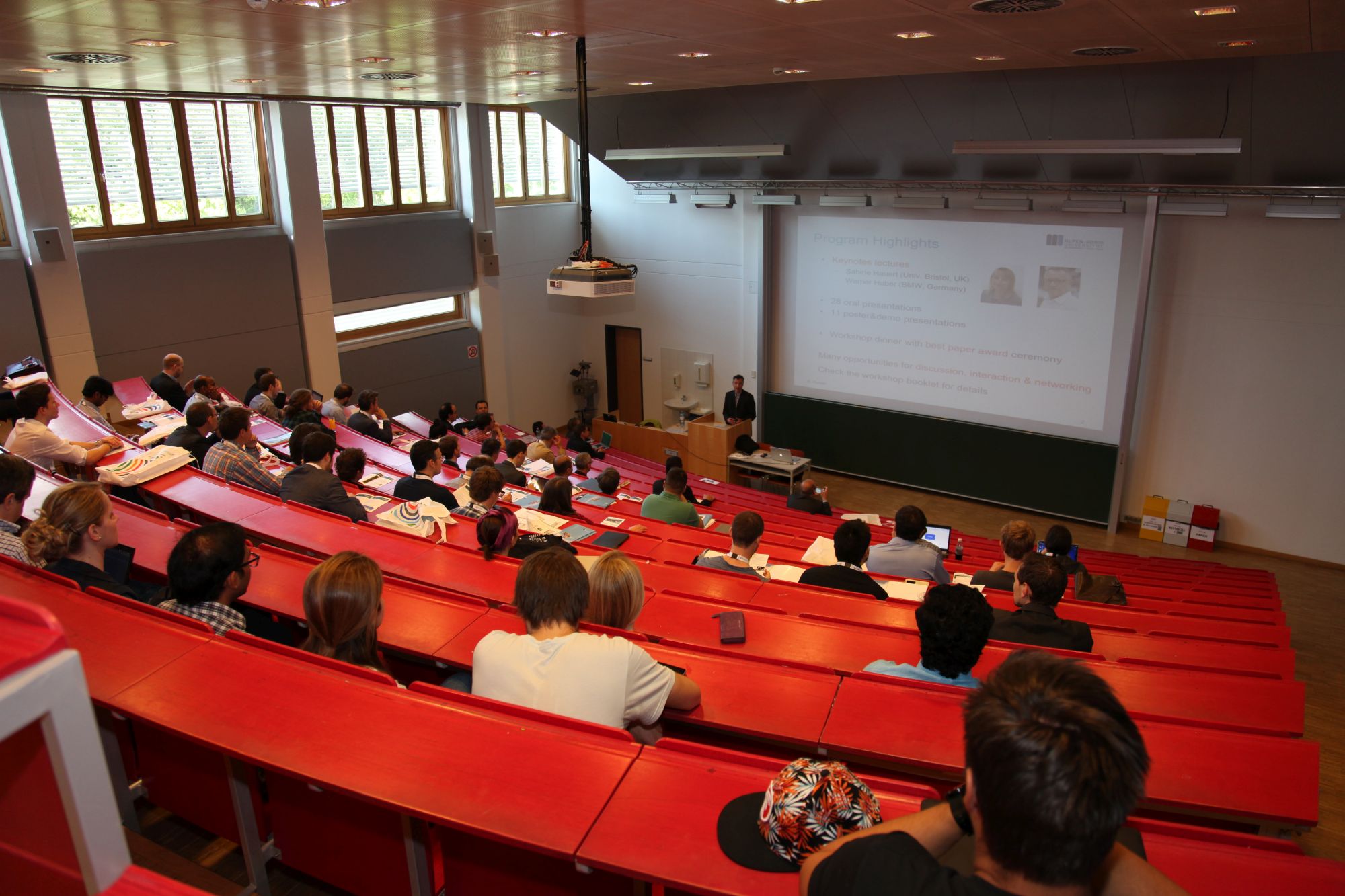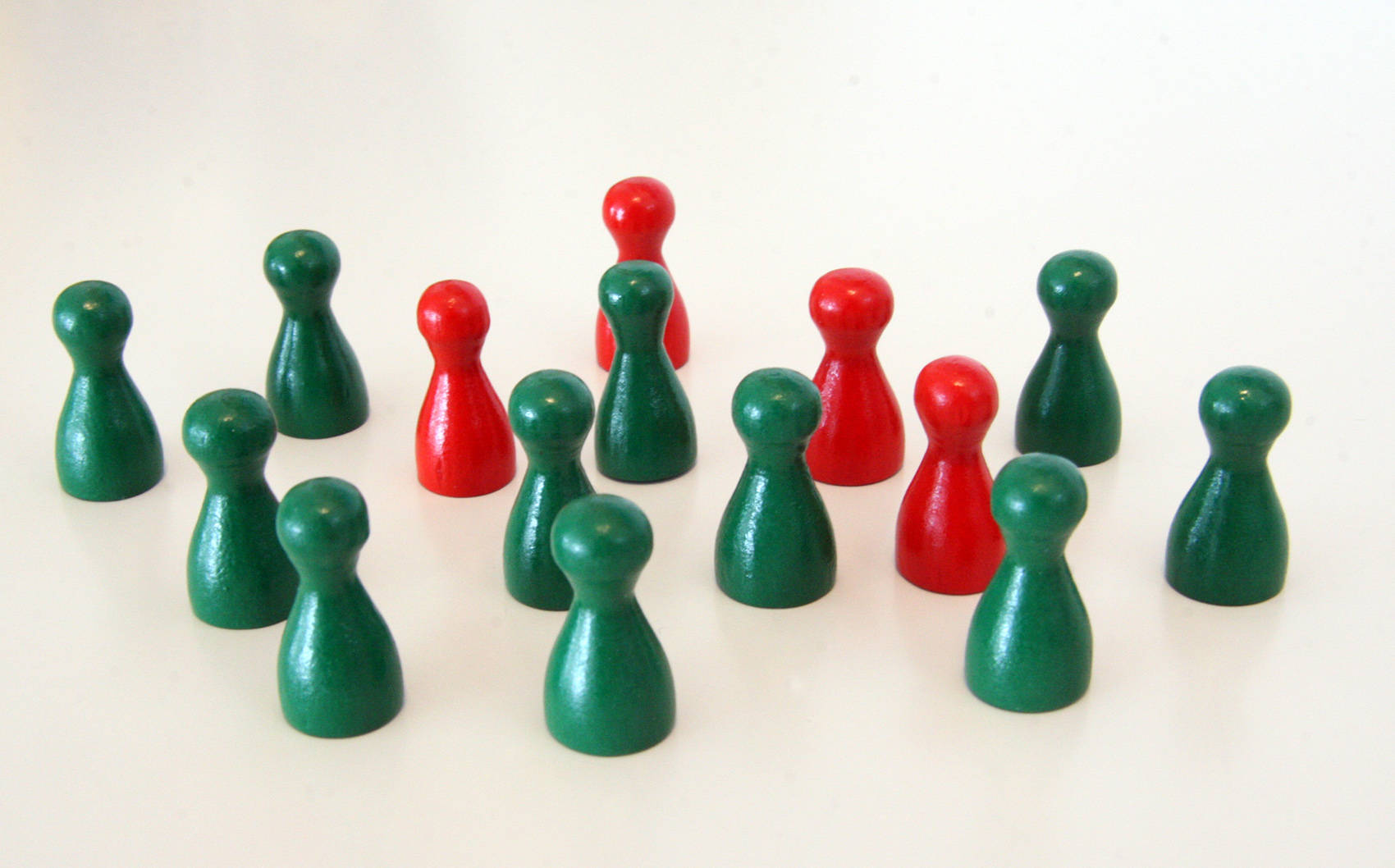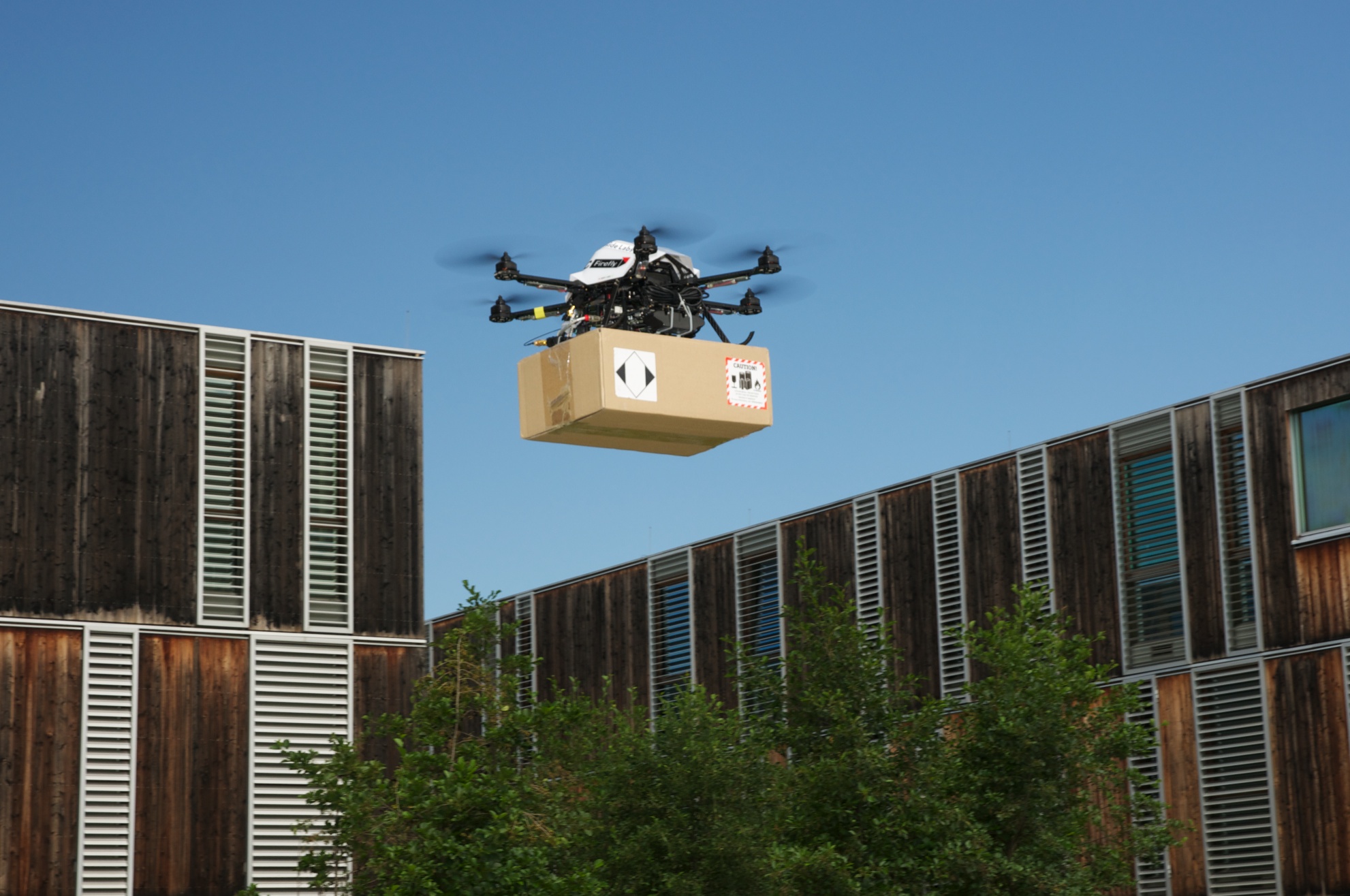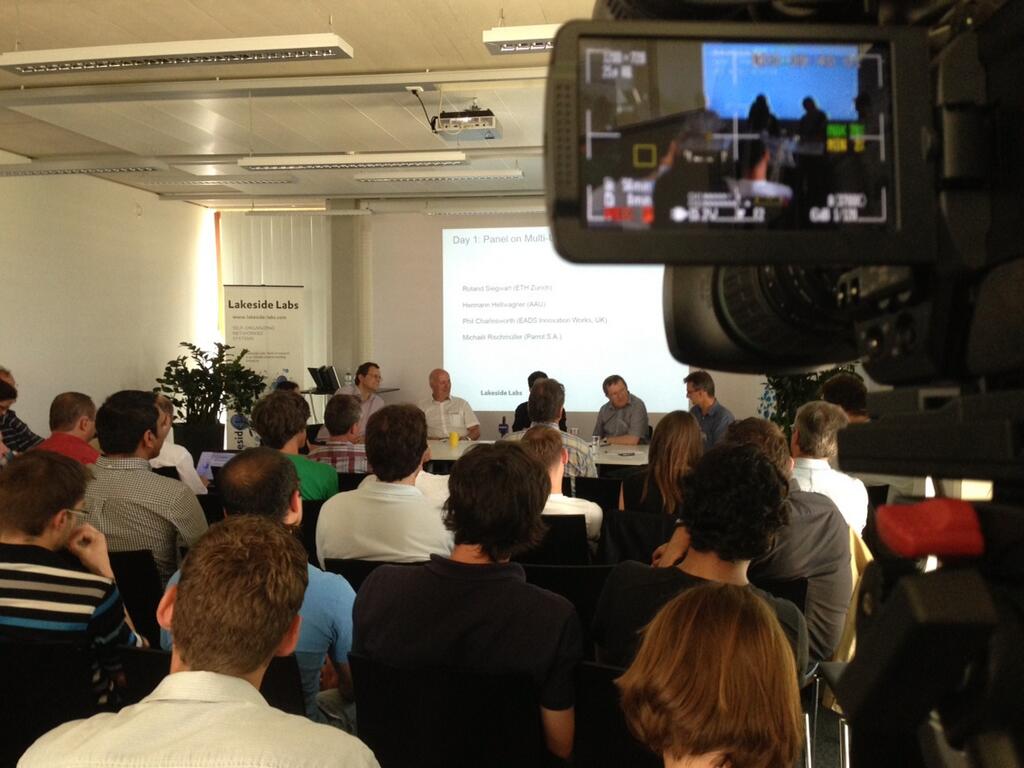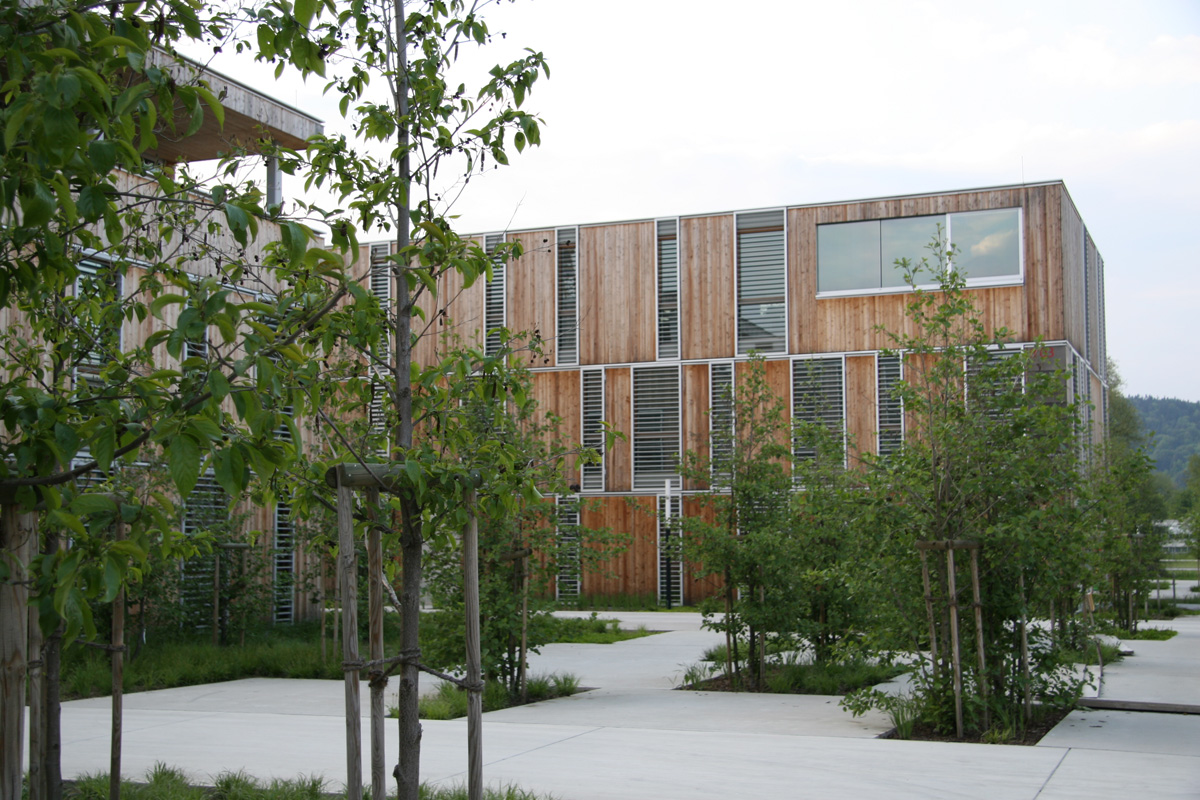The wireless standard for emergency services used by first responder organizations—TETRA (Terrestrial Trunked Radio)—provides robust and secure communication but offers limited data rates unsuited for multimedia data. Such multimedia data, however, would be beneficial in complex emergency situations. For example, in case of a large event, the police needs to keep an overview of various locations to monitor incidents (e.g., violence or mass panic). Real-time reports need to be available…
Communication demands of drone applications
Small drones become increasingly popular for civil applications, including production of movies and delivery of important goods. The wireless communications and networking of drones is an essential building block in such systems. Lakeside Labs researchers have been working in this domain for several years; now they wrote a comprehensive survey article on the characteristics and requirements of drone networks. Evsen Yanmaz, senior researcher and project manager, states: “Our survey quantifies…
UWB sensor networks in airplanes
Modern airplanes are equipped with hundreds of embedded sensors and actuators necessary for structural health monitoring, aircraft control, and passenger and crew assistance. These devices are typically interconnected by wires. Using wireless connections instead of wires improves flexibility of installations and reduces the airplane’s weight. Researchers from Airbus Group Innovations have been working on this topic for several years. An ongoing joint project with the University of Klagenfurt and Lakeside…
Austrian robotics workshop
About 80 researchers from industry and academia met at the Austrian Robotics Workshop in Klagenfurt on May 7 and 8, 2015, giving talks and demonstrations on recent developments in robotics and autonomous systems. Among them, various Lakeside Labs scientists presented their research in unmanned aerial vehicle systems, namely on wireless communications, collision avoidance, path planning, and video streaming. Two highlights were keynote talks given by invited experts: Sabine Hauert from…
Achieving consensus in networks with disturbances
The problem of finding a consensus in a group of people occurs in many social contexts. In a similar way, distributed algorithms for consensus play an important role in networked computing and communication systems if centralized decision making is difficult or impossible. Each entity in such a system processes only local information obtained from its neighbors and ideally performs only simple computations. Despite this simplicity, the process of consensus building…
Collaborative mapping with mobile robot teams
New packages for the Robot Operating System (ROS) are available for autonomous exploration of unknown environments using collaborating mobile robots equipped with cameras. The software offers wireless ad hoc communications between robots, merging of maps from different robots, and coordinated selection of exploration frontiers. A prototype with up to four robots was built that demonstrates its functionality in an indoor environment. There is a broad spectrum of applications for mobile…
Job selection in UAV-based delivery services
Aerial delivery services using small unmanned aerial vehicles (UAVs) have been proposed by major online retailers, logistics companies, and startups. An interdisciplinary project team at the University of Klagenfurt aims at contributing to the architectural setup and distributed control of such future systems. Small UAVs have found their way to civil applications. A broad variety of UAV models has been developed and commercialized in the past few years and is…
Pulse-coupled oscillator synchronization on FPGA radios
The mathematical modeling of pulse-coupled biological oscillators offers a fully decentralized and scalable approach for time synchronization. There is a broad spectrum of work on pulse-coupled oscillators in physics, biology, neuroscience, and other disciplines. The communications engineering community has been interested to transfer these results to the synchronization of nodes in wireless networks. A one-to-one transfer is infeasible due to the differences between wireless and biological communications. Several extensions and…
Research days on multi-UAV systems
The Sixth Research Days of Lakeside Labs und U Klagenfurt from July 8 — 12, 2013, hosted invited experts, professors, and young researchers to discuss ideas and exchange experiences on systems with multiple unmanned aerial vehicles (UAVs). Autonomous UAVs are used with increasing interest in civil and commercial applications and by the scientific research community. Recently, research and development efforts have shifted toward using teams of UAVs for monitoring, surveillance,…
Research days on self-organizing systems
A full week of discussions, talks, and group work on self-organizing networked systems is the concept of Research Days, organized for the second year by Lakeside Labs from July 13 – 17, 2009. Speakers included the experts Alain Barrat, Francis Heylighen, Hermann de Meer, Raissa D’Souza, and Marc Timme, along with other guests, Lakeside Labs professors, and researchers. Major discussion topics included robustness in self-organizing systems, modeling of self-organizing systems,…
